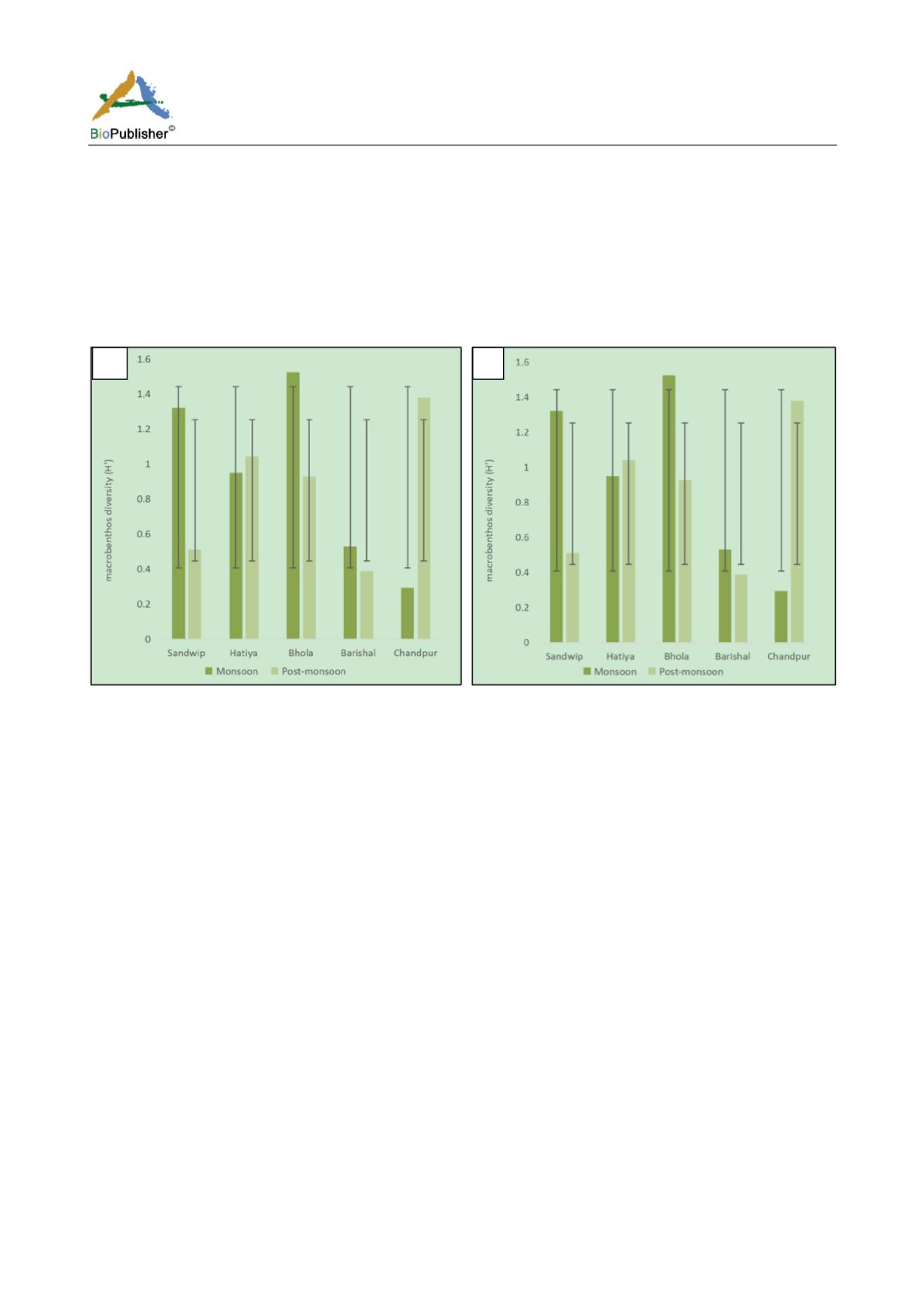
International Journal of Marine Science, 2017, Vol.7, No.12, 102-113
109
2.5 Diversity index
In the present study benthos diversity (H') and evenness (J') spatially and temporally (Figure 6a; Figure 6b) did
not show much variation (0.92±0.52 and 0.85±0.40 for the monsoon and post-monsoon seasons respectively). The
highest diversity (H') was recorded at Bhola (1.53) during monsoon season and the lowest was at Chandpur (0.29)
during the monsoon season (Figure 6a).
Again, benthos evenness (J') also showed less variation (0.64±0.32 and 0.51±0.26 during monsoon and
post-monsoon seasons respectively) (Figure 6b). The maximum evenness value was found at Sandwip (0.95)
during the monsoon season and the minimum was at Barisal (0.20) during the post-monsoon season (Figure 6b).
Figure 6 Values of macrobenthos (a) diversity and (b) evenness indexes along two seasons
Note: The vertical line on the bar diagram indicates the standard deviation (SD)
3 Discussion
The abundance and distribution of benthos are closely associated with bottom sediment physico-chemical
variables. Benthic organisms are considered as indicator of past and present conditions (Bruse et al., 1975;
Gamlath and Wijeyaratne, 1997). The presence of unusually large benthic species as well as some others absence
can be used as bioindicator of water quality (Hart and Fuller, 1978; Stanford et al., 1994). Spatio-temporal
variability in benthic fauna has been studied in coastal aquatic systems in many parts of the world (Morrisey et al.,
1992; Ieno and Bastida, 1998; Biles et al., 2003; Giberto et al., 2004). Differences in environmental variables play
critical role in distribution pattern of benthic organisms. Soil texture and salinity control distribution of benthic
organisms in coastal and estuarine region (Self and Jumars, 1978). Perkin (1976) also reported that benthic
community structure depends on environmental factors such as salinity, temperature, dissolve oxygen, depth,
organic matter, soil texture and size of sediment particles.
The Estuarine environment is exposed to diverse change in physic-chemical variables due to incessant
mixing of fresh water with marine water (George et al., 2012). The water quality estimation is very
important to determine ecosystem that have great impact on the occurrence of aquatic lives (Chang, 2008).
In the present study, water quality was recorded slightly acidic with low salinity in major part of the estuary. The
other physico-chemical parameters viz; H
-
CO
3
, water temperature, secchi depth, CO
2
, DO, alkalinity, salinity and
pH showed significant response for the variations in benthos community structure (p<0.05).
Water temperature variation is significant function in macrobenthic assemblages (Ndome et al., 2012). Unanam
and Akpan (2006) reported that the distribution of macrobenthos reduced with increase in temperature. The
present study area (the lower Meghna River) is under tropical monsoon region and the atmospheric temperature is
maintained by seasonality. It was observed that the surface water temperature was 2 to 5.5°C less than air
a
b


